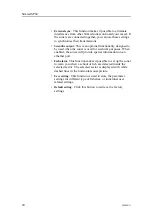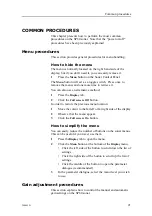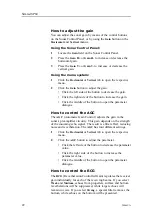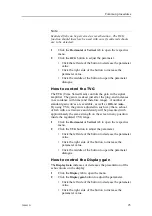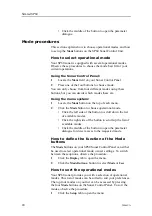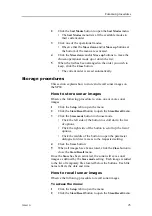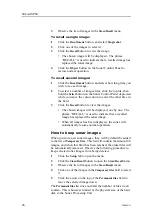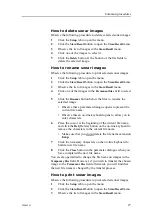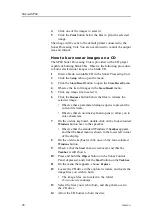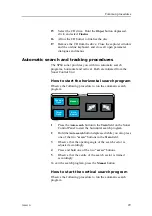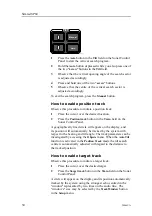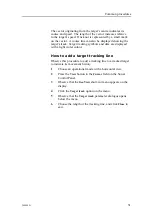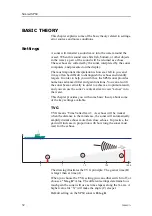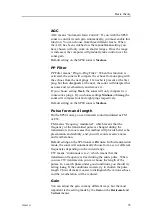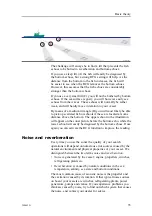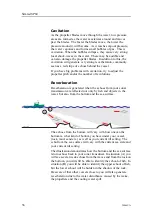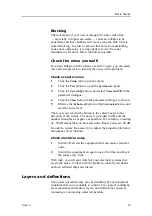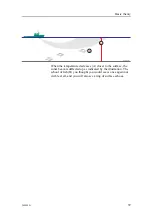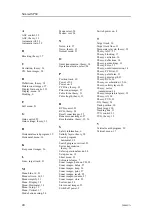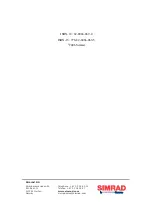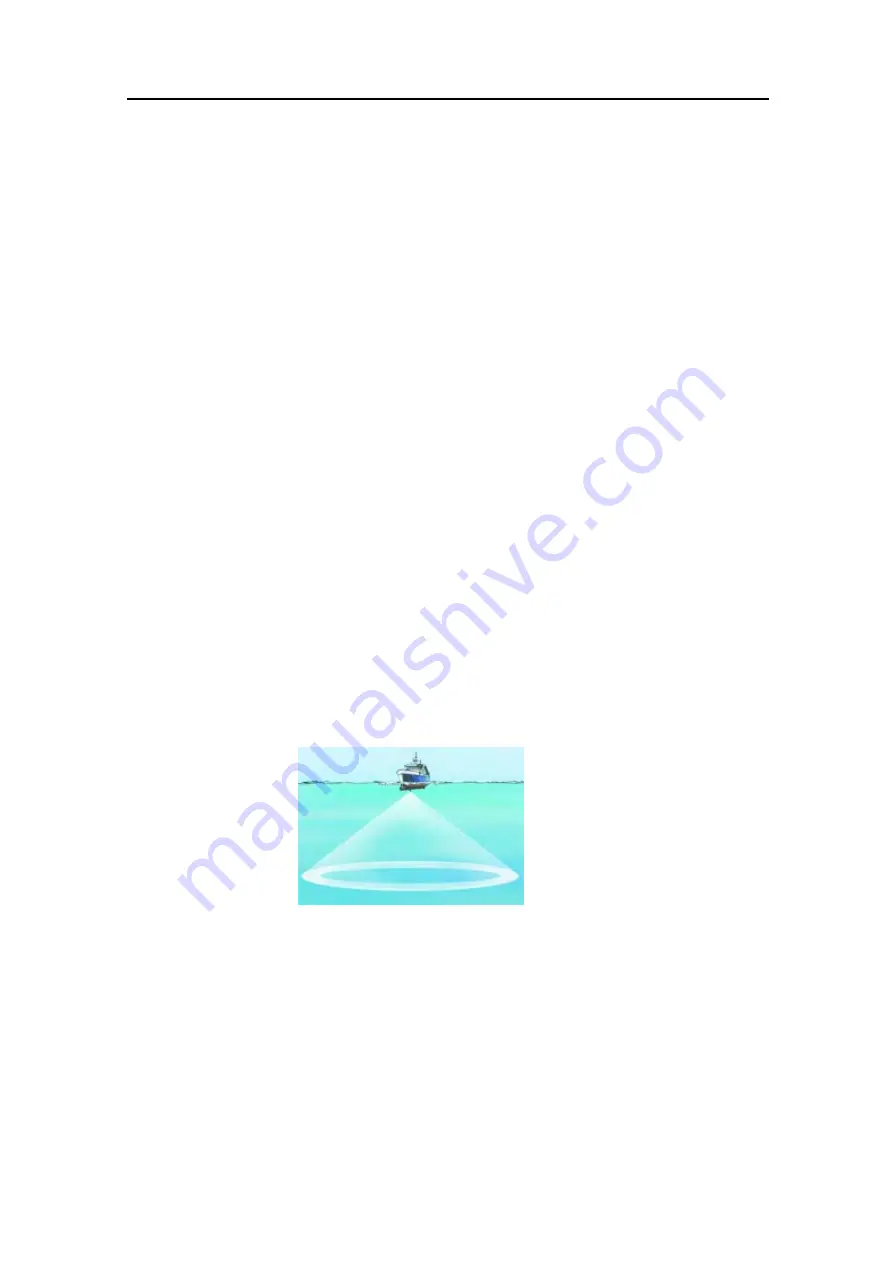
Simrad SP60
If you have too much gain, you will see a sonar picture with too
many echoes. This is because the large amplification presents all
kind of noise and reverberation that the sonar picks up. If the
gain is smaller the noise and reverberation will disappear, but if
it is too small the fish echoes may disappear as well. In most
cases you should try with a medium value. On the SP60 sonar,
the default value is set to
30
.
RCG
RCG means “Reverberation Controlled Gain”. This function
compare the strength from each echo, and then automatically
adjust the range and echo level in the sonar picture.
The RCG will remove unwanted echoes from the sea surface and
the bottom. If you select setting
Strong
the bottom echoes will
disappear altogether if the bottom is flat, while schools of fish
close to the bottom will be easier to see.
Note that scattered fish may be more difficult to spot if the RCG
function is active, as these can be misinterpreted as reverberation.
It is therefore important that you use the RCG with great care if
your are searching for scattered fish.
Default setting on the SP60 sonar is
Medium
.
Sector
The SP60 sonar can transmit the sound in two shapes;
Omni
or
Sector
.
An Omni transmission means that the sound is transmitted in a
full 360 degrees circle around the vessel, while Sector means that
it is transmitted in a defined direction shaped like a cone. The
Sector transmission will provide you with a longer range.
Tilt
The sonar beam can be tilted vertically in steps of 1 degree, and
the chosen tilt is shown on the sonar picture. At 0 degrees tilt
you will transmit the sonar beam in parallel with the sea surface,
while 90 degrees tilt will direct it straight down.
34
300065/A
Содержание Simrad SP60
Страница 2: ......
Страница 43: ...Index 300065 A 41 ...

